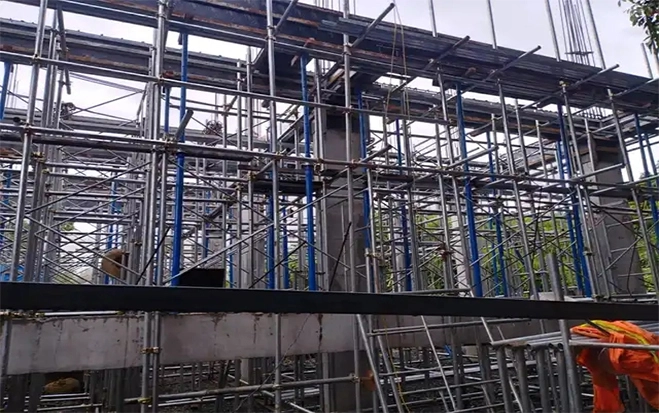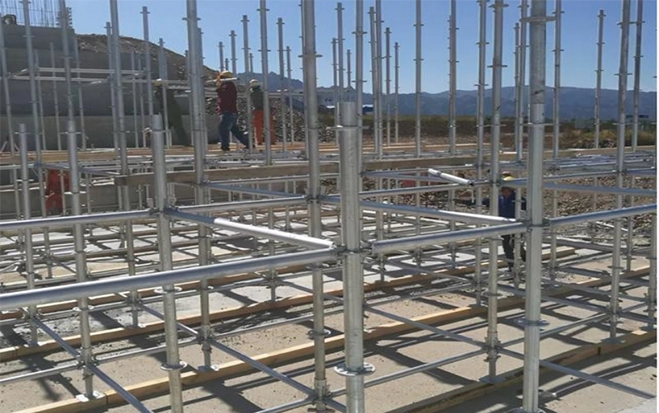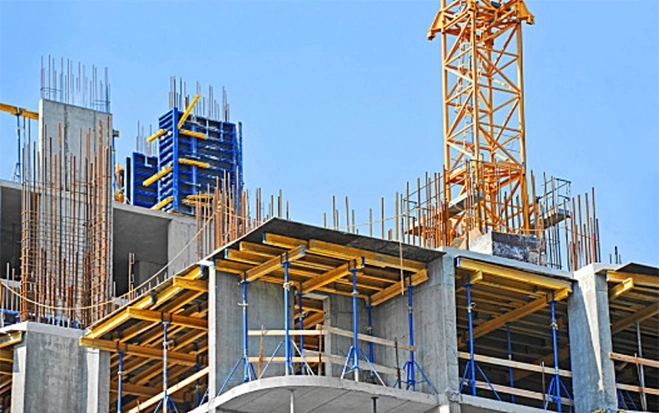Taishenglan's steel scaffolding components have high load-bearing capacity, stable structure, safety and reliability, convenient assembly and disassembly, long service life, and ease of management. The steel scaffolding component is widely used in public construction projects such as bridges, pipe corridors, subways, large factories, large stages, and stadiums. Moreover, steel scaffolding components are also very important, as they relate to the overall quality of the steel scaffolding.
Taishenglan's steel scaffolding components consist of base plates, bases, vertical poles, large and small horizontal poles, diagonal braces, throw braces, scissor braces, tie rods, ground rods, and their accessories, which are introduced as follows:
Vertical Pole
It is vertical to the ground and is the main load-bearing member of the steel scaffolding. Its function is to transfer all the load from the scaffolding plank to the foundation through the base and the base plate.
Large Horizontal Pole
Parallel to the wall. Its role is to connect with the vertical pole to form a whole, transferring all the load from the scaffolding plank to the vertical pole.
Small Horizontal Pole
Perpendicular to the wall, its role is to directly bear the load on the scaffolding plank and transfer this part of the load to the large horizontal pole. In double-row steel scaffolding, it is an important member that connects the inner and outer two rows of frames, enhancing the overall stability of the steel scaffolding.
Diagonal Brace
Tightly connected to the outer row of vertical poles of the steel scaffolding, it crosses diagonally with the vertical pole forming an angle of 45°-60° with the ground, and is continuously set up and down, shaped like the letter "Z". It is mainly set at the corners of the steel scaffolding, and its function is to prevent the scaffold from tilting along the longitudinal direction and to bear the horizontal force on the steel scaffolding.
Scissor Brace
A double diagonal rod set on the outside of the steel scaffolding, crossing each other and forming an angle of 45°-60° with the ground. Its function is to connect the steel scaffolding into a whole and bear the horizontal force on the steel scaffolding, enhancing the overall stability of the steel scaffolding.
Throw Brace
Set on the outer row (periphery) of the steel scaffolding, it is a diagonal rod that supports the steel scaffolding from the ground, generally at an angle of 60° with the ground. Its role is to enhance the lateral stability of the steel scaffolding, preventing it from tilting or collapsing outward. Its function is especially important during the initial support of the steel scaffolding and the last few steps of dismantling it. The throw brace should be connected to the vertical pole of the steel scaffolding with a horizontal support (also known as horse beam, back support) to enhance stability.
Tie Rod
It is a horizontal rod set at vertical intervals not greater than 4 meters along the vertical pole and horizontal intervals not greater than 7 meters, which can withstand tension and compression and is connected to the main structure. Its role is to bear all the wind load of the steel scaffolding and the load generated by the uneven settlement of the inner and outer rows of vertical poles.
Ground Rod
It is a longitudinal horizontal rod tightly attached to the ground. Its role is to enhance the stability of the root of the vertical pole of the steel scaffolding.
Scaffolding Plank
It is a component laid on small horizontal poles directly bearing construction loads.



